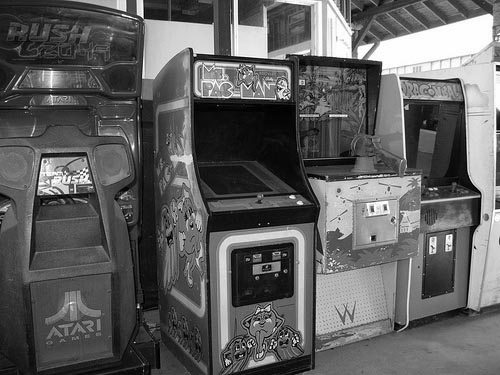Too big to work (part two)
 The world of video game developers, players, and funding is one that has been unjustly under-discussed in the academic realm. As a profession, video game development is belittled, as an art form, it is hardly even acknowledged. While developing theory that describes exactly what constitutes interactive media, and examines what artistic and social potential the field has could be profound and insightful. I’m going to focus on the expansion of the industry as a business in this article.
The world of video game developers, players, and funding is one that has been unjustly under-discussed in the academic realm. As a profession, video game development is belittled, as an art form, it is hardly even acknowledged. While developing theory that describes exactly what constitutes interactive media, and examines what artistic and social potential the field has could be profound and insightful. I’m going to focus on the expansion of the industry as a business in this article.
Rewind to 1990: the stage is gradually being set for the dot-com boom of the late 90’s. All around America, small companies with the words “soft,” “tech,” “tronic,” or “intelli” somewhere in their names are humming along, looking to be the next to make a huge, lucrative break in the most exciting industry at the end of the century: personal computers.
Nintendo Co., Ltd. had already been working on interactive electronics for decades, but the industry is insular and controlled. The immutable products that are released are done so according to strict Nintendo specifications. This does not encourage risky, creative experimentation. When personal computers explode into the public market, any Joe working at Intellesoftechtronic has the ability to both produce and experience interactive technology all on the same system. The following grassroots movement is nothing short of inspirational.
Groups of fellow programmers banded together at work and foraged into the vast, uncharted landscape of the cyber-unknown. Limited only by their imaginations and the rapidly improving hardware that their computers ran on, they coded creativity in garages and advertised by packing limited versions of their code onto floppy-disks in Ziploc bags.
The crucial foundations for the massive Halo and Call of Duty franchises were laid in this manner by John Carmack and his colleagues at Softdisk when they pioneered the idea of a “first person shooter” in their free time. This and countless other innovations dotted the decade.
Now fast forward to today: after only twenty years this entirely new artistic medium is in a state of creative suffocation. Incessant advertisement engineers anticipation for the next installment in one of a very limited number of senile franchises. This year in Halo: We’ve made it into Call of Duty. This year in Madden: The team rosters have been updated. What happened?
Some say the technology has reached a plateau, but that implies that creativity is limited by technology, which just isn’t true. After the advent of talkies and color, film has seen relatively few comparable leaps in technology and yet every year countless artists redefine what that medium is capable of conveying. The fact is, the video game industry became too big too fast.
There simply hasn’t been enough time to develop an infrastructure that supports mid-budget interactive programs, and since the early 2000s we’ve seen countless developers that once fit that description go under. When the only interactive technology being experienced by the masses costs millions of dollars to produce, investors aren’t going to risk creative experimentation. This eliminates art from the process and replaces it with sound business decision making.
Our generation has had the privilege of watching this industry grow from a nascent, creative experiment into a multi-million dollar industry and the experience should have taught us something. Bigger is not always better. Bigger business does not enable or encourage innovation, it slowly suffocates it. It may provide careers and financing, but we should not forget that this comes at a cost.
While video games may be an industry we are willing to give up to this cost, others that are more crucial to our daily well being must pay it as well. We have had the experience of watching this monumental industrial expansion happen, now it is up to us to fully understand its implications.
